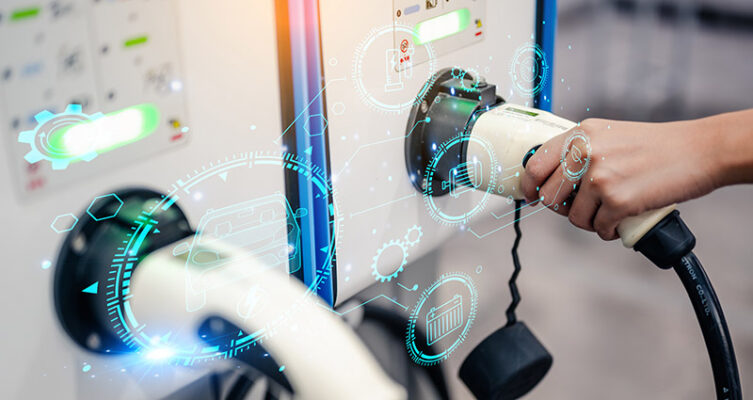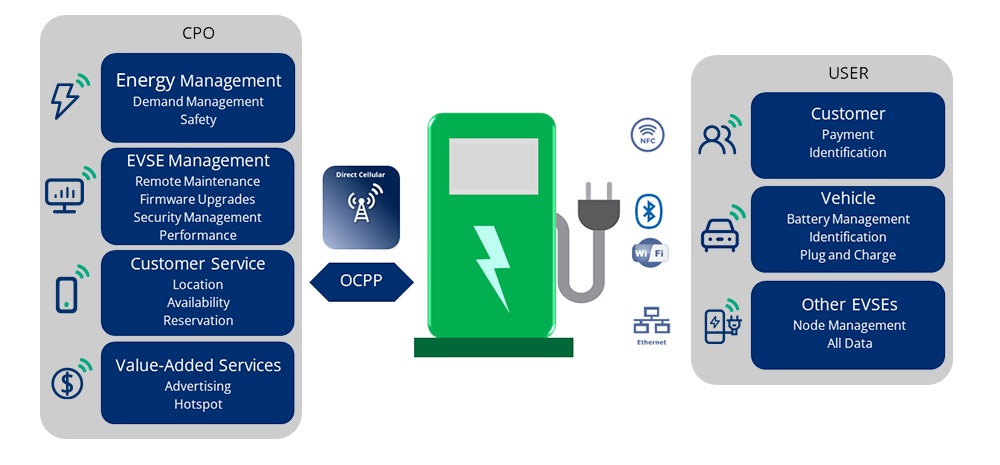Preventive Maintenance for Reliable EV Charging
By Joe Braga
August 13, 2024
By Joe Braga
August 13, 2024
Estimated reading time: 5 minutes

There is a race to increase the national electric vehicle (EV) charging station infrastructure. However, the race is evolving from simply expanding EV charger availability to a model in which reliability matters.
In June 2022, the United States Department of Transportation (USDOT) proposed standards for government-funded EV charging stations. The stations must be available and working 97% of the time, and third-party apps must provide real-time charging status. The following year, the Biden-Harris Administration made $100 million in federal funding available to improve EV charger reliability.
Drivers who switch to EVs expect an easy and reliable charging experience. The app shouldn’t leave them stuck because it directed them to a charger that was occupied or not working properly. Moreover, it shouldn’t affect their buying choices as they look toward retailers with the most reliable chargers.

Charging service providers (CSPs) face many responsibilities and complexities. CSPs include e-mobility service providers (eMSPs), charge point operators (CPOs) and electric vehicle service equipment (EVSE) manufacturers.
Sometimes, a company is a CPO and an EVSE. The CSPs need a 97% or better uptime with real-time monitoring and data exchange to compete successfully.
Reliable connectivity between all parties is essential in charging an EV. Think of it as an infrastructure of real-time tasks and communications between the CPO, the EVSE and the EV driver.
CPOs set up and manage a network of charging stations they own or operate for third parties. They must ensure stations are operational and available 24/7 to the service providers.
EMSPs simplify the charging experience for EV drivers through mobile apps and other self-service tools. They provide access to charging stations within a geographic area. They also manage billing transactions with real-time data.
EV drivers use the apps to access information in real time. They must easily locate available stations to charge their EVs and securely manage and make payments.

The EV charging ecosystem is complex and delicate. It needs to be more dependable so that more consumers can confidently switch to EVs. It’s frustrating for an EV driver to arrive at a charging station and find it out of service or having problems.
An EV charging station or electric vehicle supply equipment (EVSE) may become temporarily unusable in several ways. The main issue a driver might encounter is a broken charging wand. However, other factors can jeopardize service, including changing networks (especially in cities with fluctuating network coverage), payment processing issues and cyberattacks.
Reliability is critical for EV adoption. Preventive maintenance (predictive maintenance) with real-time monitoring decreases infrastructure failure.

Predictive maintenance uses Internet of Things (IoT) technologies to forecast equipment health and maintenance needs, avoiding downtime and expensive repairs. Real-time monitoring of hardware and software components means receiving constant updates about how a system is doing.
Preventive maintenance with real-time monitoring is very effective for software components in a charging network.
Some software features that require monitoring include:
If any software components are compromised, charging can be delayed or fail. CPOs and EVSE manufacturers can use preventive maintenance with real-time monitoring to detect and anticipate issues, ensuring charging station reliability.
For preventive maintenance of hardware components, a technician must be dispatched to physically replace or update the affected component. With software, CPOs can use IoT to detect and update firmware and security remotely. They can also track performance to see if the charging station is profitable.

There has been an influx of new EV charging manufacturers. These manufacturers are eager to install their charging stations and EVSEs at prime locations. However, in their haste, they might (and some have) overlook the detail required in designing robust IoT systems.
IoT technology is at the heart of preventive maintenance and real-time monitoring. EV chargers need cellular modules since they are the heart of the apparatus that networks IoT sensors and devices to the IoT. Nevertheless, many manufacturers are not following the best practice of designing for reliability in their cellular connectivity strategy. From a device management perspective, this set-and-forget mindset is insufficient.
A Berg Insight report notes that EV charging infrastructure has an expected lifespan of 10 years or more.1 Cellular communication systems need continuous monitoring and maintenance. Many new EV charger makers don’t know that cellular networks are always changing and require expertise in hardware, networks and connectivity.
Telit Cinterion’s expertise encompasses hardware, network and device management. As a global-local mobile virtual network operator (MVNO), we provide industrial-grade services that guarantee connectivity and reliability for EV charging applications. Moreover, we extend a forward-looking roadmap of upcoming cellular and connectivity technologies to navigate the evolving cellular mobile landscape.
We have decades of IoT connectivity solution experience. We can help you monitor and maintain your EV charging network in real time. Telit Cinterion’s connectivity and device management platform tools provide complete control and visibility over your entire deployment. Our IoT modules are certified worldwide, empowering you to launch your EV charging solution anywhere.
Speak to our EV charging experts to start your journey and remove the complexity.
Editor’s Note: This blog was originally published on 18 November 2022 and has since been updated.
1. Caspar Jansson, “EV Charging Infrastructure in Europe and North America, 3rd Edition,” Berg Insight, January 2023.